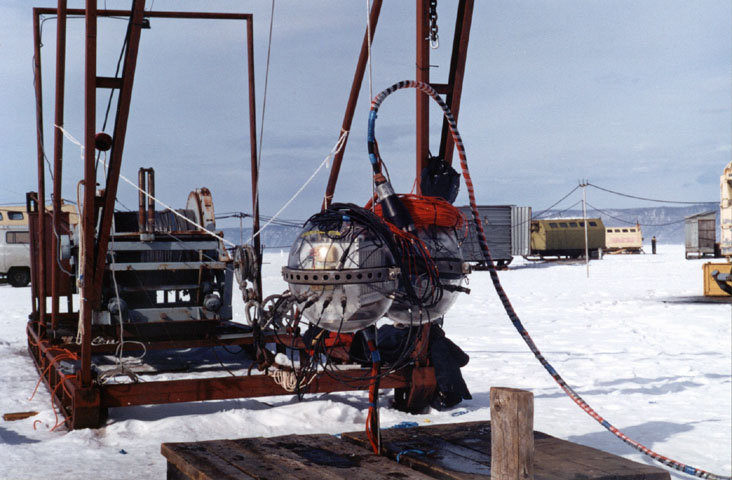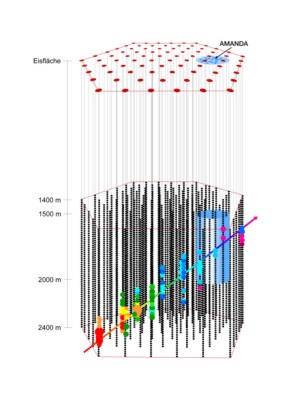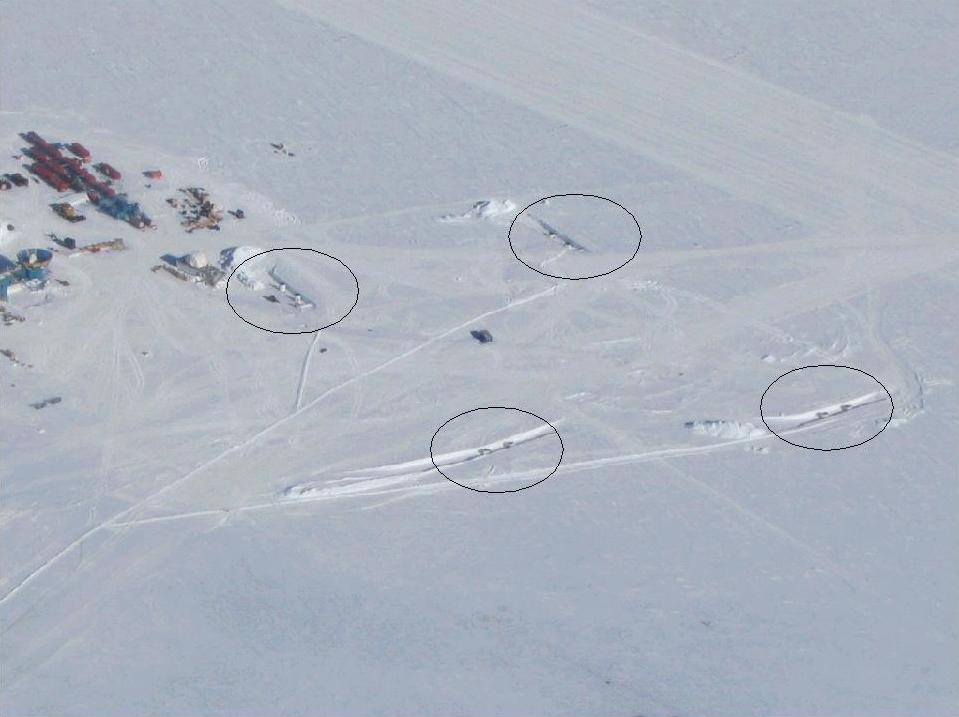|
|
||
|
The Baikal Neutrino Telescope Lake Baikal, Russia ..
|
||
| DESY Zeuthen
Neutrino - Astrophysics The underwater neutrino telescope NT-200 is located in the Siberian lake Baikal at a depth of approximately 1 km. Deployment and maintenance of the Baikal detector is carried out during the winter months, when the lake is covered with a thick ice sheet. From the ice surface, the optical sensors can easily be lowered into the water underneath. Once deployed, the optical sensors take data over the whole year and the data taken are permanently transmitted to the shore over electrical cables. The BAIKAL experiment played a pioneering role in neutrino astronomy: During spring 1993, scientists from Russian institutes and from DESY were the first to install an underwater telescope which took data not only for some hours, but for a whole year. At that time, the detector comprised only three strings carrying 36 optical sensors in total. Since 1998 the Baikal collaboration takes data with the NT-200 telescope which consists of 192 optical sensors deployed on eight strings. DESY Zeuthen has been participating in the experiment since 1988. With a moderate extension of the telescope, Baikal will be able to hold the leading position among all neutrino telescopes on the Northern hemisphere. From approximately 2005 on, however, the the bigger neutrino telescopes currently being constructed in the Mediterranean are expected to take over. SOURCE: DESY Zeuthen Home Page Baikal
Group Home Page
|
||
|
||
| IceCube: A Next Generation Neutrino-Telescope
From the year 2004 on, IceCube, a high technology next generation neutrino telescope, will be installed at the South Pole, several thousands of meters below the surface of the Antarctic ice cap. With 4800 optical sensors distributed over a cubic kilometer of ice, IceCube will be the biggest particle detector world-wide. At first, the South Pole appears a strange site for deploying such an instrument. But there are crucial advantages that outweigh the relative inaccessibility. The Polar ice being more than 3 km deep and highly transparent is an ideal medium to detect the faint light signals emitted by charged particles produced by high-energy neutrinos. The necessary infrastructure on site is provided by the newly renovated Amundsen-Scott station.... ...IceCube will be about 30 times bigger and thus substantially more sensitiv e than AMANDA. The deployment of all 4800 optical sensors will be completed until 2010, but during the construction phase the deployed parts of the detector will already produce high-quality data. The 677 optical modules of AMANDA will be integrated into the the bigger IceCube array. The schematic sketch shows the dimension of the two detectors. Just like AMANDA, IceCube will be deployed in vertical strings. Each IceCube string will comprise 60 optical modules (three times the number of modules attached to the much shorter AMANDA strings), as well as their power-supply and the cables for the signal readout. The modules at one string will be equally spaced at a distance of 17 m. Each string will be lowered into a vertical hole, drilled with pressurized hot water, such that the instrumented volume of the detector spans a depth range between 1400 and 2400 m. A total of 80 holes will be drilled. They will be regularly distributed over a surface of a square kilometer, the distance between two holes being 125 m.
|
||
| The IceTop Experiment
IceTop is a km2 array of particle detectors that is currently being installed at the south pole, right above the IceCube neutrino telescope. It is used to detect extensive particle showers induced in our atmosphere by high energy cosmic rays. Its spacing (80 stations = 160 Cherenkov ice tanks, 125m mean distance) allows the observation of cosmic rays with energies between 1014eV and 1017eV. In this regime, the energy spectrum is expected to include 2 kinks: The first, already observed by most experiments, is at the energy where presumably light cosmic rays (protons) start to be able to escape the magnetic fields of our galaxy and the observed fluxes thus decrease faster above than below ("knee"). A second "knee" is expected but yet unobserved for heavier particles like iron nuclei. Using IceCube as a high energy neutrino detector and the CORSIKA air shower simulation package, IceTop can identify the masses of primary cosmic ray particles and unfold the energy spectra for different primaries.
|
||
| FAIR USE NOTICE: This page contains copyrighted material the use of which has not been specifically authorized by the copyright owner. Pegasus Research Consortium distributes this material without profit to those who have expressed a prior interest in receiving the included information for research and educational purposes. We believe this constitutes a fair use of any such copyrighted material as provided for in 17 U.S.C § 107. If you wish to use copyrighted material from this site for purposes of your own that go beyond fair use, you must obtain permission from the copyright owner. | ||
|
|





